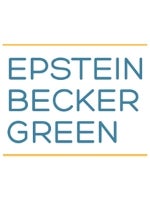The New York City Council (the “NYCC”) has proposed to establish a “Savings Access New York Retirement Program” (the “NYC Retirement Program”) that would require New York City private-sector employers with at least 10 employees to offer a new savings program to employees who are not eligible to participate in an employer-provided savings plan (such as a 401(k) or 403(b) plan). Currently the NYCC proposal is in committee, and no further action has been taken to date.
Although passage of the NYC Retirement Program is far from certain, this proposal is consistent with other state and local government legislative efforts to increase the retirement savings of employees. To assist employers with long-range benefits planning, this blog provides a high-level summary of the NYCC proposal and the potential questions and issues that employers may face if required to implement the NYC Retirement Program.
Summary of the NYC Retirement Program
- An employer, whether for-profit or otherwise, with a physical presence in NYC will be a “covered employer” subject to the NYC Retirement Program if the employer (i) currently employs no fewer than 10 employees and has employed no fewer than 10 employees for the prior calendar year, (ii) has been in continuous operation for at least two years, and (iii) has not offered, in the previous two years, a retirement plan to its “eligible employees” (as defined below).
- An employee will be eligible for the NYC Retirement Program if such employee (i) is at least 18 years old, (ii) is employed part-time or full-time for compensation in New York City by a covered employer, and (iii) has not been offered a retirement plan by the covered employer during the preceding two years. Under the NYC Retirement Program, a “retirement plan” includes a qualified retirement plan under Section 401(a) and Section 403(a) and (b) of the Internal Revenue Code of 1986, as amended, however, many such retirement plans exclude certain classifications of employees, such as part-time or temporary employees that would be covered by the NYC Retirement Program.
- The NYC Retirement Program provides for an automatic 3% contribution via payroll deduction by eligible employees to a Roth or traditional IRA. The employee will be permitted to opt-out of the program or to contribute an amount other than 3%.
- Covered employers will have the following obligations:
- Enrolling eligible employees;
- Remitting payroll deductions for deposit in the NYC Retirement Program;
- Providing information to eligible employees about the NYC Retirement Program; and
- Maintaining records documenting compliance with the NYC Retirement Program.
- Covered employers that fail to comply with the NYC Retirement Program may be subject to civil monetary penalties, the amount of which will be based on the number of eligible employees affected and the duration of the compliance failure.
- Administrative fees for the NYC Retirement Program will be allocated pro rata to the accounts of eligible employees.
- The NYC Retirement Program is intended to be exempt from the Employee Retirement Income Security Act of 1974, as amended, although the current proposal does not indicate the exemption that will be used.
Takeaways for Employers
Given the potential reach of the NYCC proposal and the ambiguities it raises, employers with a presence in New York City should monitor the status of the NYCC proposal. Even large employers who currently offer broad-based retirement plans may not be exempt from the NYC Retirement Program if retirement benefits are not offered to all eligible employees covered by the NYC Retirement Program.




 />i
/>i

